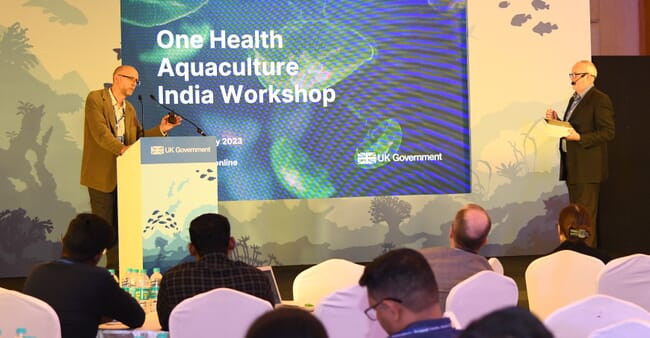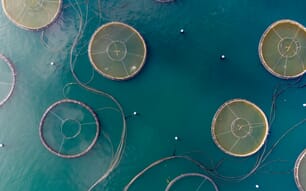
He was speaking at today's One Health Aquaculture India workshop in Kochi © CMFRI
Organised by the UK’s Centre for Environment, Fisheries and Aquaculture Science (CEFAS) and the ICAR-Central Marine Fisheries Research Institute (CMFRI) in Kochi, it discussed the use of the One Health framework to integrate key issues in animal, environmental and human health.
HABs are a leading cause of aquatic food-borne health risks to both farmed fish and the consumers who eat them. According to the speakers at the event, a three-fold increase in HABs was reported between 2000 and 2020.
Presenting the status of HABs in Indian waters, Dr Grinson George, senior programme specialist of the SAARC Agriculture Centre (SAC), Dhaka said issuing early advisories are essential for helping to transfer farmed fish from areas under threat or to plan their early harvest.
“Increased frequency and intensity of the HABs badly affect mariculture activities such as cage fish farming as it leads to fish kills,” he said.
He added that aquaculture-associated health issues and water-borne diseases among the farming community are on the rise, making the situation worse in the wake of extreme weather events such as floods and tropical cyclones.
The workshop funded by the Ocean Country Partnership Programme. Part of the UK Government’s Blue Planet Fund, it aims to develop collaborative approaches to improve safe and sustainable aquaculture production in India, and to use the One Health framework to integrate key issues in animal, environmental and human health.
The growing threat of AMR
The experts who spoke at the workshop also maintained that anti-microbial resistance (AMR) is a growing threat to health systems across the globe. Aquatic food systems and value chain also contribute to the AMR risk through multiple ways, and they felt that there is a need to follow safe aquatic health management options to contain the menace. Examples from different countries on the role of communities in combating anti-microbial resistance were presented by Dr David Verner-Jeffreys, principal scientist at CEFAS.




